15 Feb 2024 - {{hitsCtrl.values.hits}}
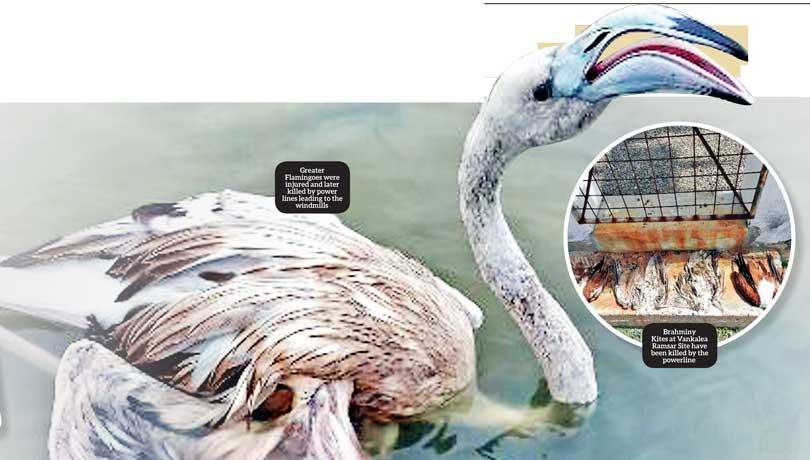
 Mannar is one of the oldest cities in Sri Lanka dating back to the maritime Silk Road and the trade routes between India and Sri Lanka. It also has some of the most important wintering wetlands for migratory birds in
Mannar is one of the oldest cities in Sri Lanka dating back to the maritime Silk Road and the trade routes between India and Sri Lanka. It also has some of the most important wintering wetlands for migratory birds in
Sri Lanka.
Sri Lanka is a signatory nation for the United Nations Convention of Migratory Species (CMS). Hence, we have a global responsibility and binding to protect about 15 million birds (of 250 species) visiting Sri Lanka from over 30 countries. Mannar alone gets about a million birds representing 150 species.
Mannar is amongst the four richest migratory bird regions in Sri Lanka, owing to its large aggregations of wintering waterbirds, including 20 globally threatened species that reach up to about one million birds.
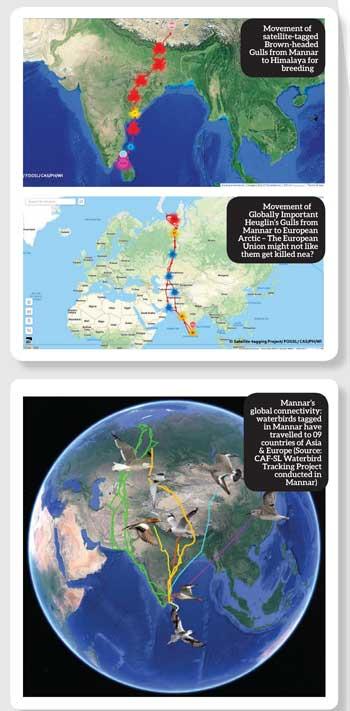 Mannar is considered a Critical Wintering Site of the Central Asian Flyway (Critical Site Network 2.0) by Wetlands International and Birdlife International (Important Bird Area) and recognized as a wetland of International Importance by the Ramsar Convention.
Mannar is considered a Critical Wintering Site of the Central Asian Flyway (Critical Site Network 2.0) by Wetlands International and Birdlife International (Important Bird Area) and recognized as a wetland of International Importance by the Ramsar Convention.
It also provides breeding habitats for eight species of seabirds, many of which are listed as Critically Endangered (CR) in the National Red List of Threatened Species.
Central Asian Flyway - Sri Lanka Waterbird Tracking Project conducted by the University of Colombo has synthesized novel knowledge, underscoring the strategic role that Mannar plays within this global flyway.
Mannar’s role in the waterbird-rich Palk Bay region has been brought to light by the findings of CAF-SL Waterbird Tracking Project conducted in Mannar. The over-wintering & over-summering migratory birds were observed to regularly move between Mannar & South India along Rama’s Bridge, through the Jaffna peninsula or directly across the Palk Bay.
The tagged birds have revealed the heavy connectivity of key wetlands in the Mannar Island. The birds fly from west to east and vice versa across the island daily. They connect Rama’s Bridge and Urumalei mudflat, Korakulam tank, Erukkalampiddy lagoon, Vankalei Sanctuary and Vidataltivu Nature Reserve in Mannar. All these are critical wetlands recognized internationally (by CMS) and nationally by the Department of Wildlife Conservation (DWC). Examples of movement along the northern coast include nationally Critically Endangered (CR) Crab Plover & Globally Threatened Bar-tailed Godwit.
Even though the EIA report proposed a narrow ‘Bird Corridor’ at the interior of the island, GPS-tagged birds in the Mannar Island show a wide use of the northern coast while moving between the Protected Areas in Mannar (Adam’ Bridge Marine National Park, Veditaltivu Nature Reserve and Vankalei Sanctuary).
Some of the main reasons for the EIA to miss this important movement corridor along the north coast could be:
1. Wrong timing - The bird observations were done by observers walking in the forest – on foot – during the day time from 6 am – 6 pm, while the majority of the movement between protected areas happens between 6 pm – 6 am (at night).
2. Wrong season - The EIA did not cover the critical Migratory Period of birds during this study. Therefore, the observers failed to see the movement of large numbers of birds, as resident birds typically do not move in large flocks in Mannar.
3. The globally accepted technologies for the study of bird movement (that are available in Mannar) were not used to map the movement tracks.
4. It is surprising that the Central Asian Flyway and the Convention of Migratory Species of the United Nations were not stressed in the report.
5. Even though the EIA report states that a thorough review of information is done, the publicly available and widely circulated information on movement patterns of critical species of the Central Asian Flyway in Mannar was not referred to and seems ignored. These satellite-tagged birds fly through the proposed wind farm.
6. The proposed narrow ‘movement corridor’ for millions of migratory birds seems highly arbitrary and lacks support from currently available information in the EIA report (on migratory birds in Mannar). The corridor is proposed conveniently away from the proposed windfarm based on – no study and no data (as stated in the report itself).
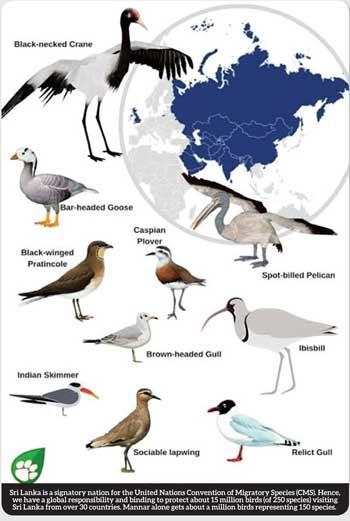 The proposed wind farm is located in the best forest areas in central Mannar Island, which serve as vital stopover and refuelling sites for birds approaching Sri Lanka. Some of these forest birds continue their migration and fly to key wildlife tourism destinations such as Nuwara-Eliya, Hakgala, Ella and Sinharaja forests. Therefore, disturbance to Mannar can affect bird tourism across the country.
The proposed wind farm is located in the best forest areas in central Mannar Island, which serve as vital stopover and refuelling sites for birds approaching Sri Lanka. Some of these forest birds continue their migration and fly to key wildlife tourism destinations such as Nuwara-Eliya, Hakgala, Ella and Sinharaja forests. Therefore, disturbance to Mannar can affect bird tourism across the country.
These forests are also home to resident species of birds, mammals and reptiles of Mannar and act as the green buffer for the critical wetlands on either side.
Removal of birds, forests and other wildlife from Mannar will severely impact Mannar’s economy and the potential for wildlife-based tourism that is planned by the Tourism Development Authority and Northern Development framework.
There are alternative sites in Mainland Sri Lanka with High wind energy potential and less ecological damage. 250 MV windfarms can go there to provide vital energy demand while not compromising the ecological and economic benefits in Mannar Island.
The proposed narrow ‘movement corridor’ for millions of migratory birds seems highly arbitrary and lacks support from currently available information in the EIA report. The corridor is proposed conveniently away from the proposed wind farm based on – no study and no data
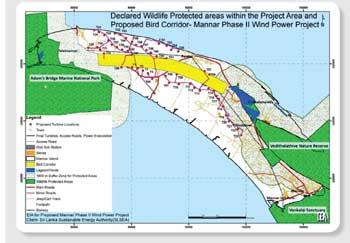
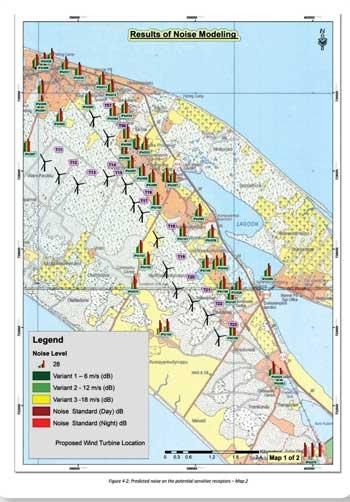
04 Jan 2025 3 hours ago
04 Jan 2025 3 hours ago
04 Jan 2025 4 hours ago
04 Jan 2025 4 hours ago
04 Jan 2025 5 hours ago